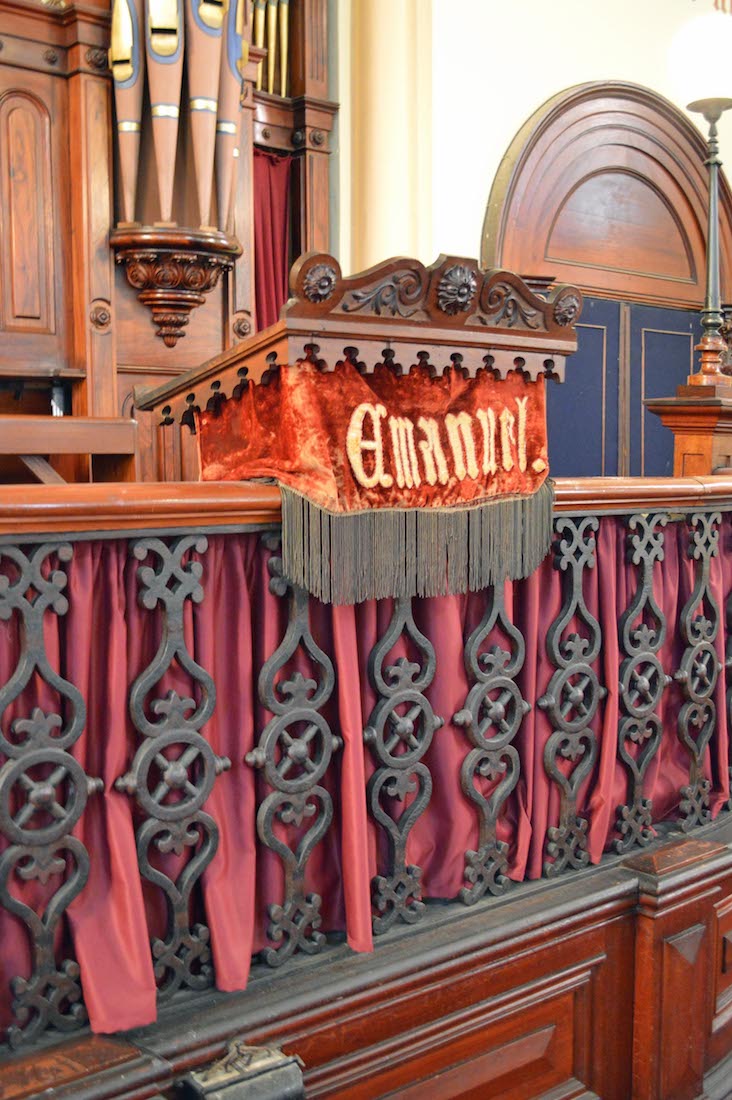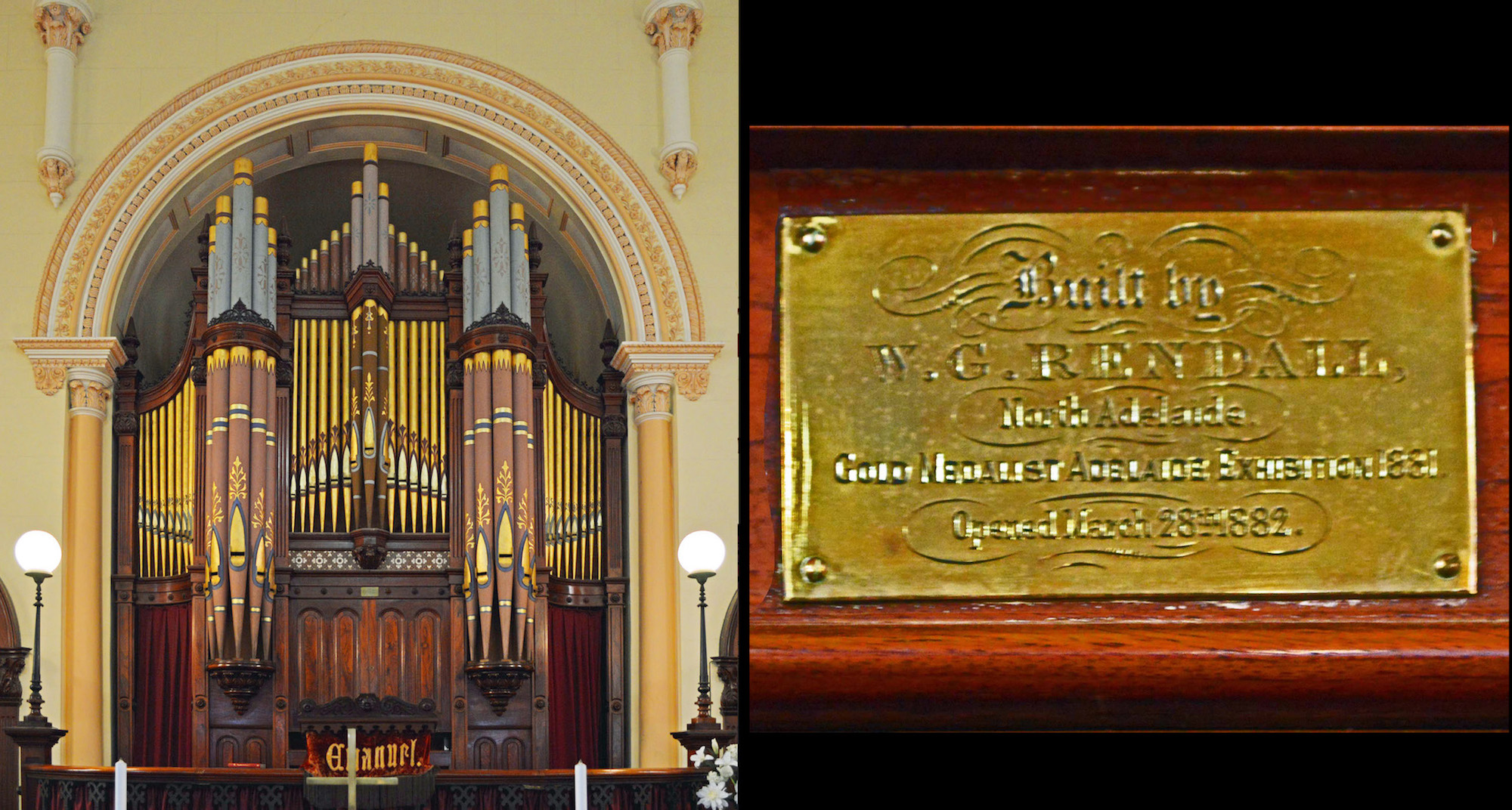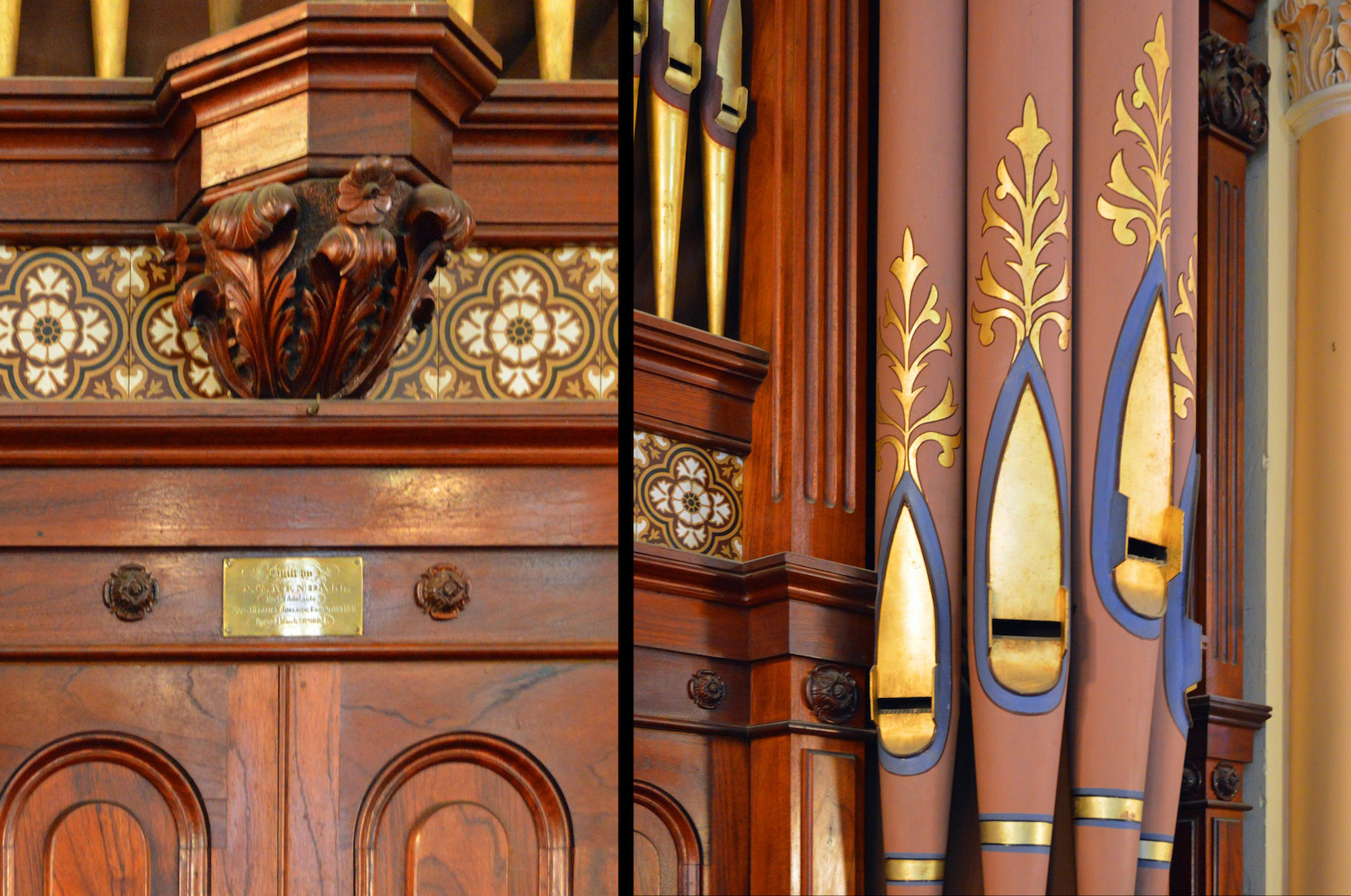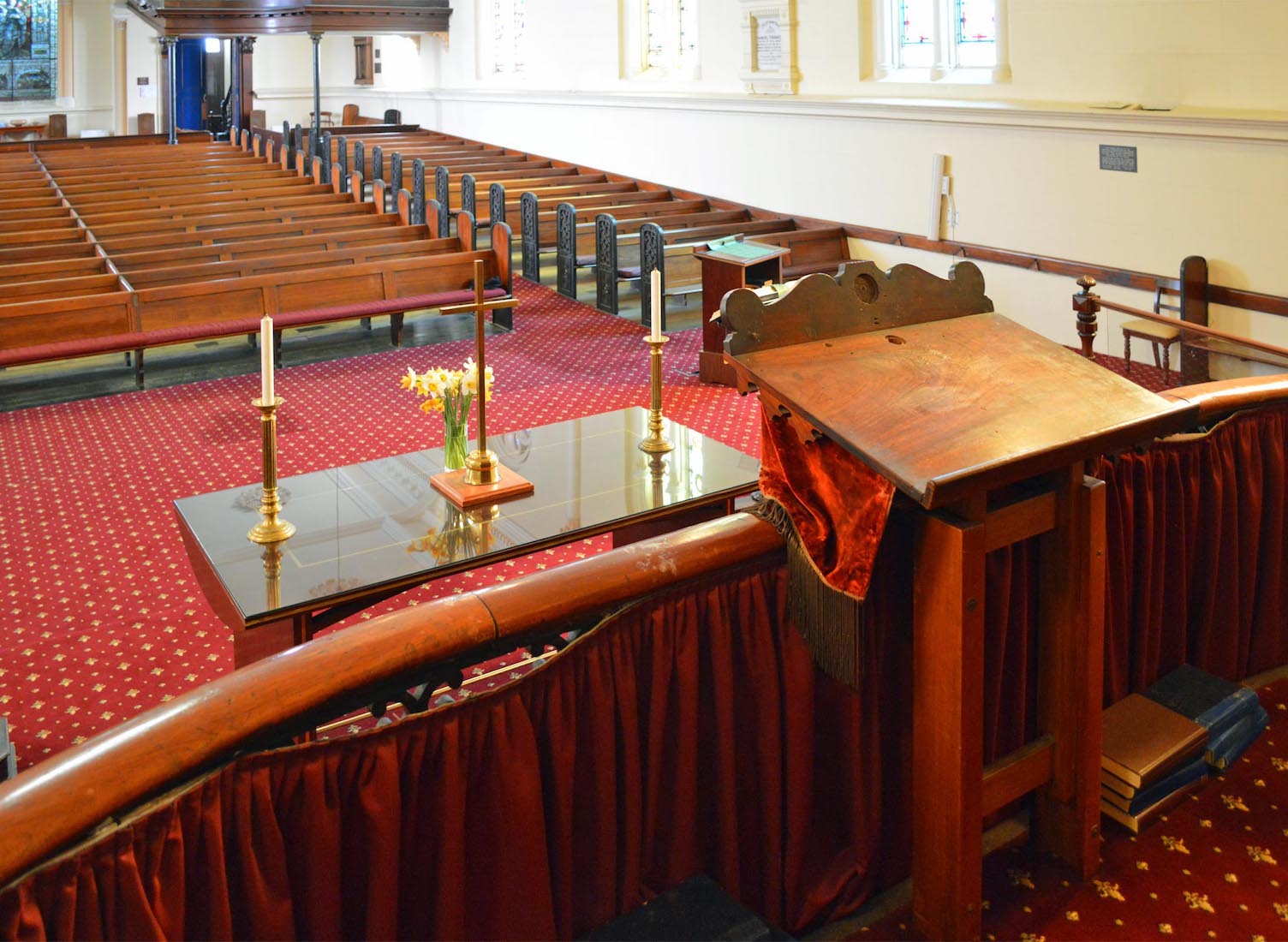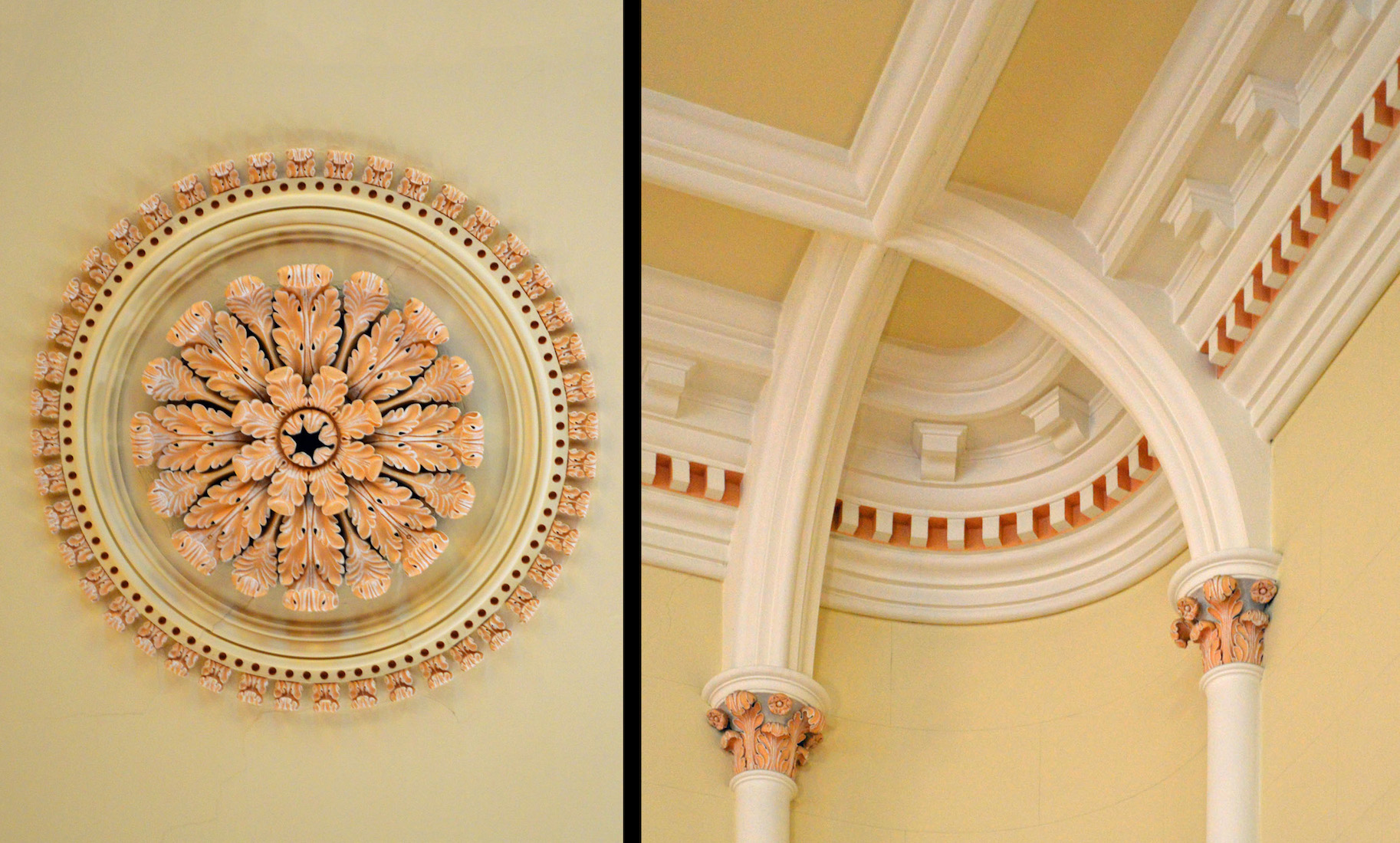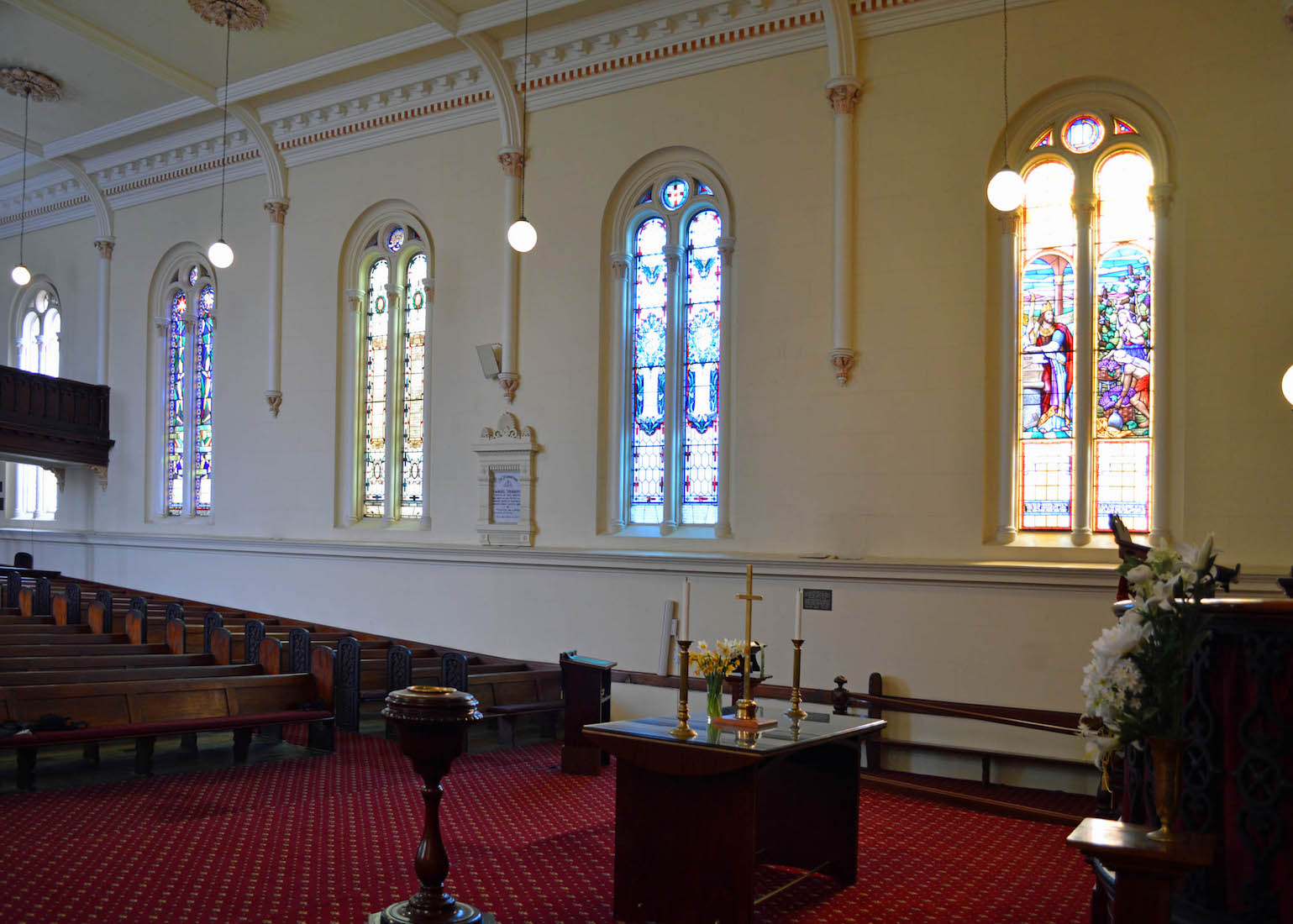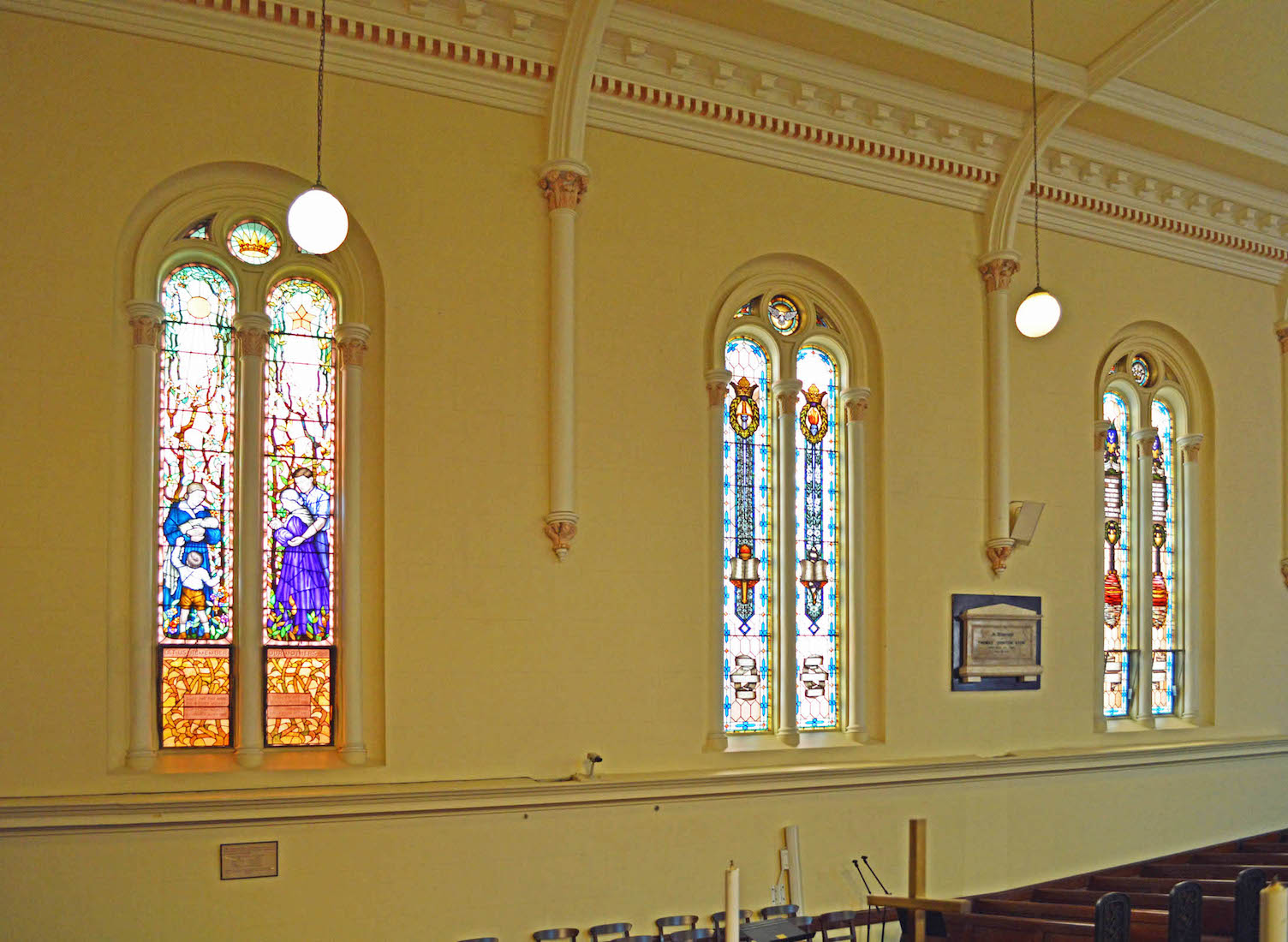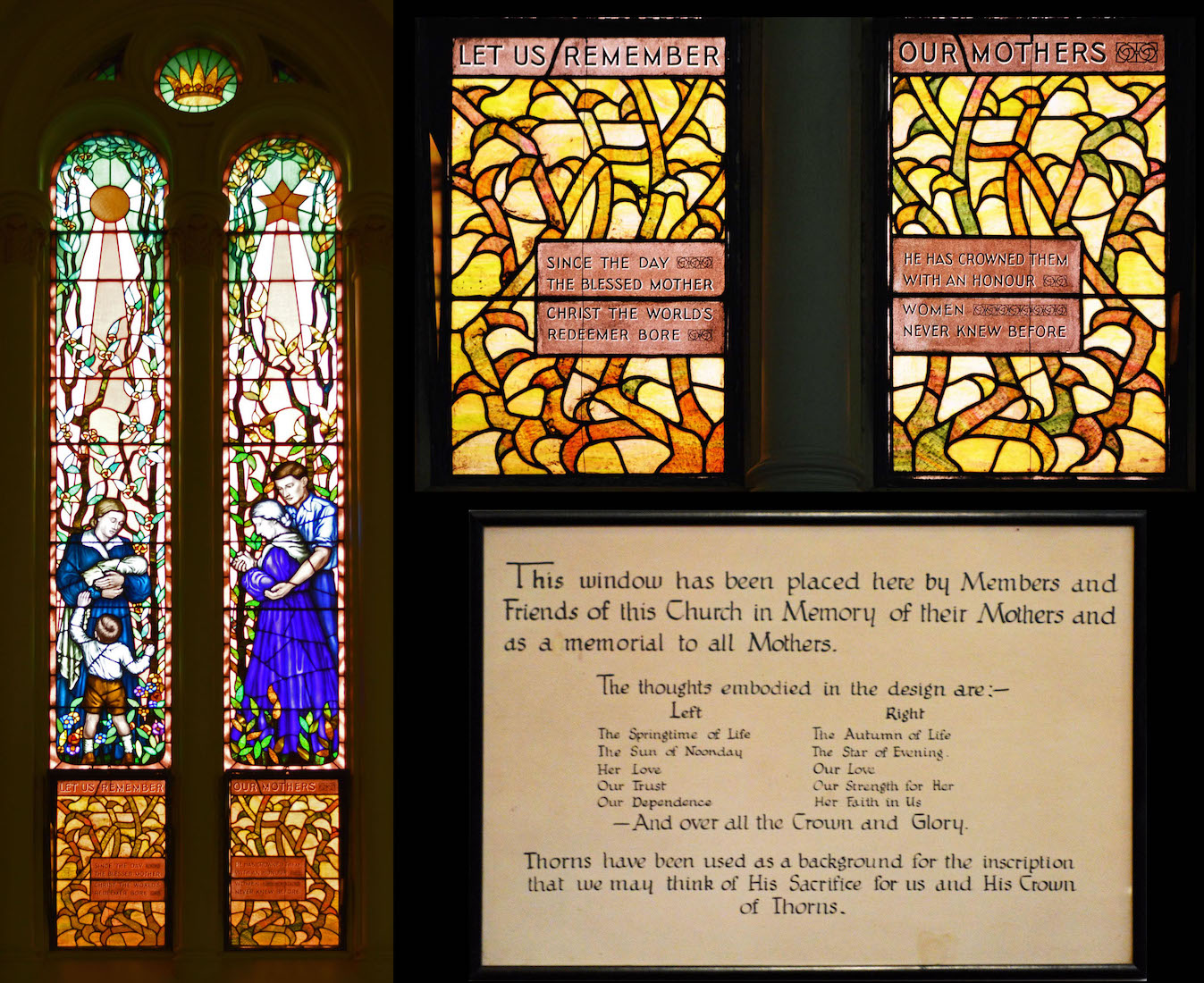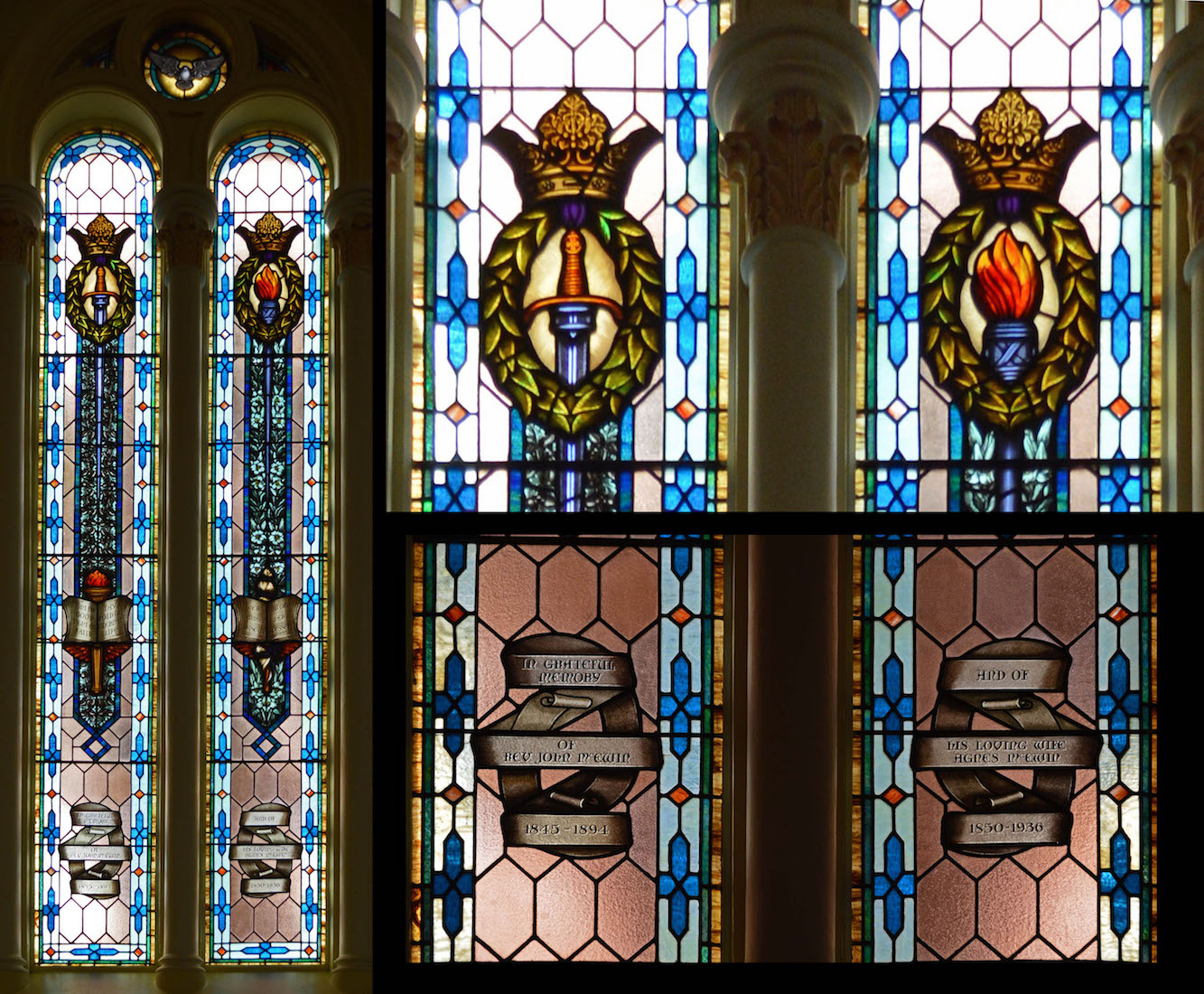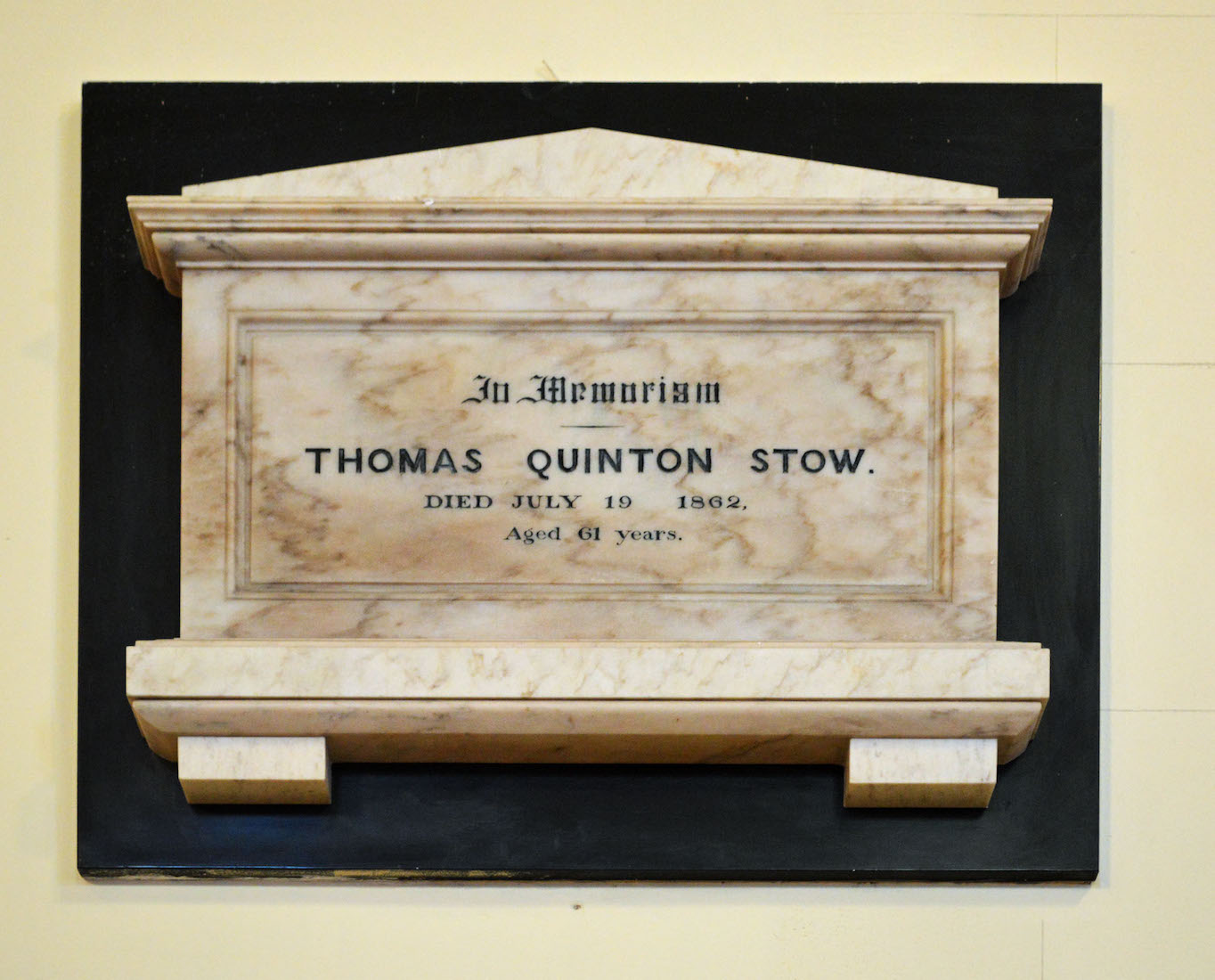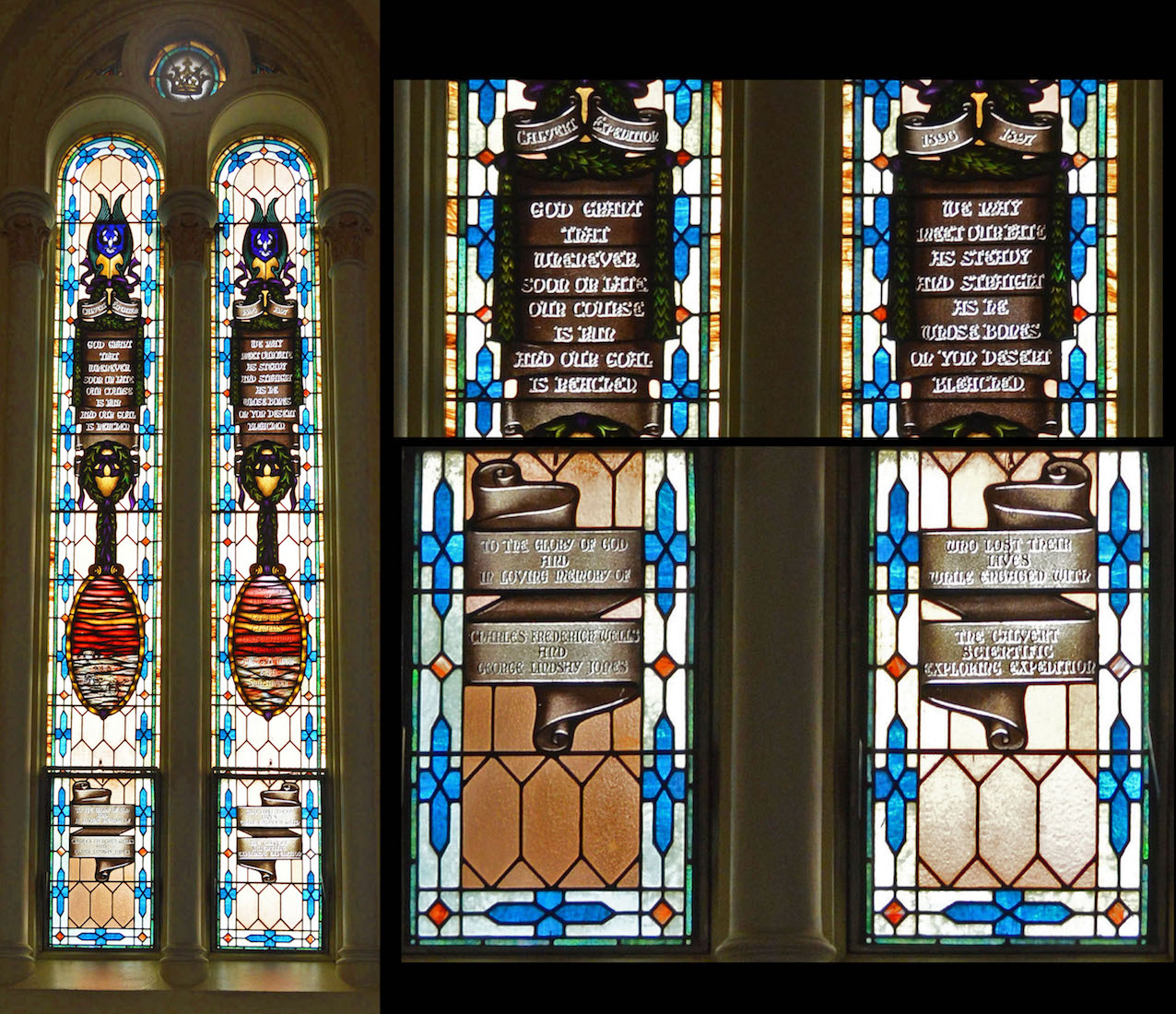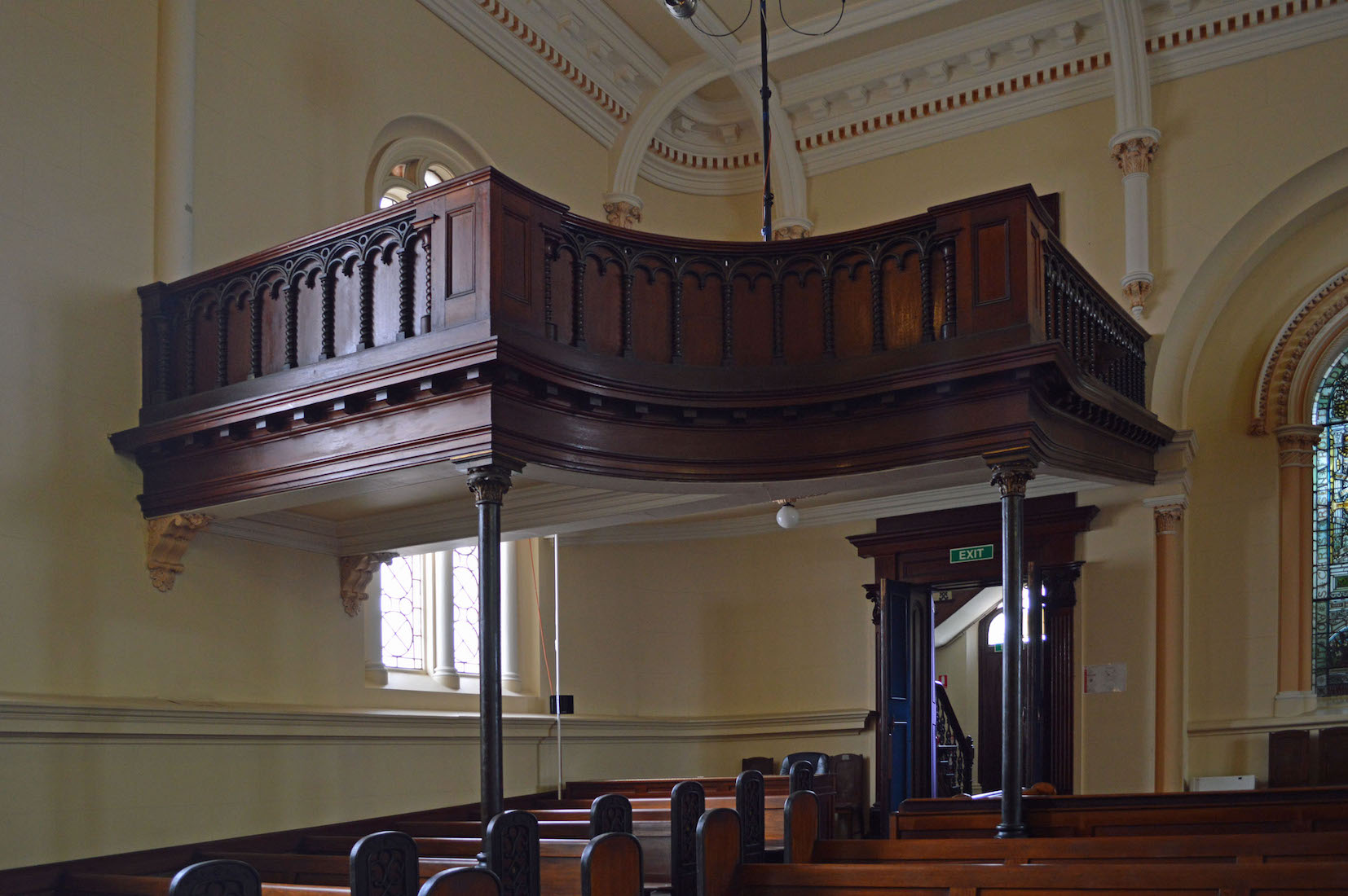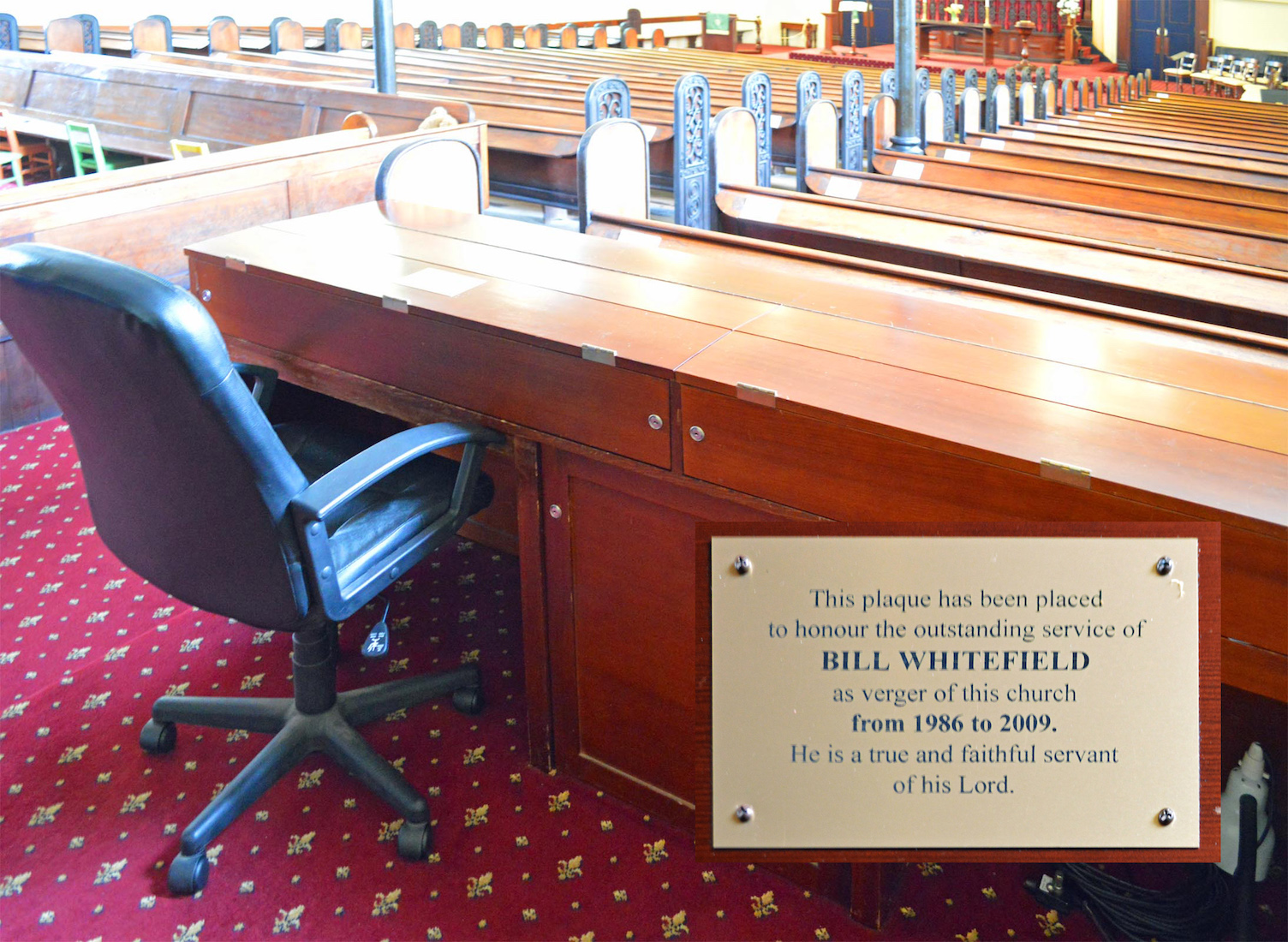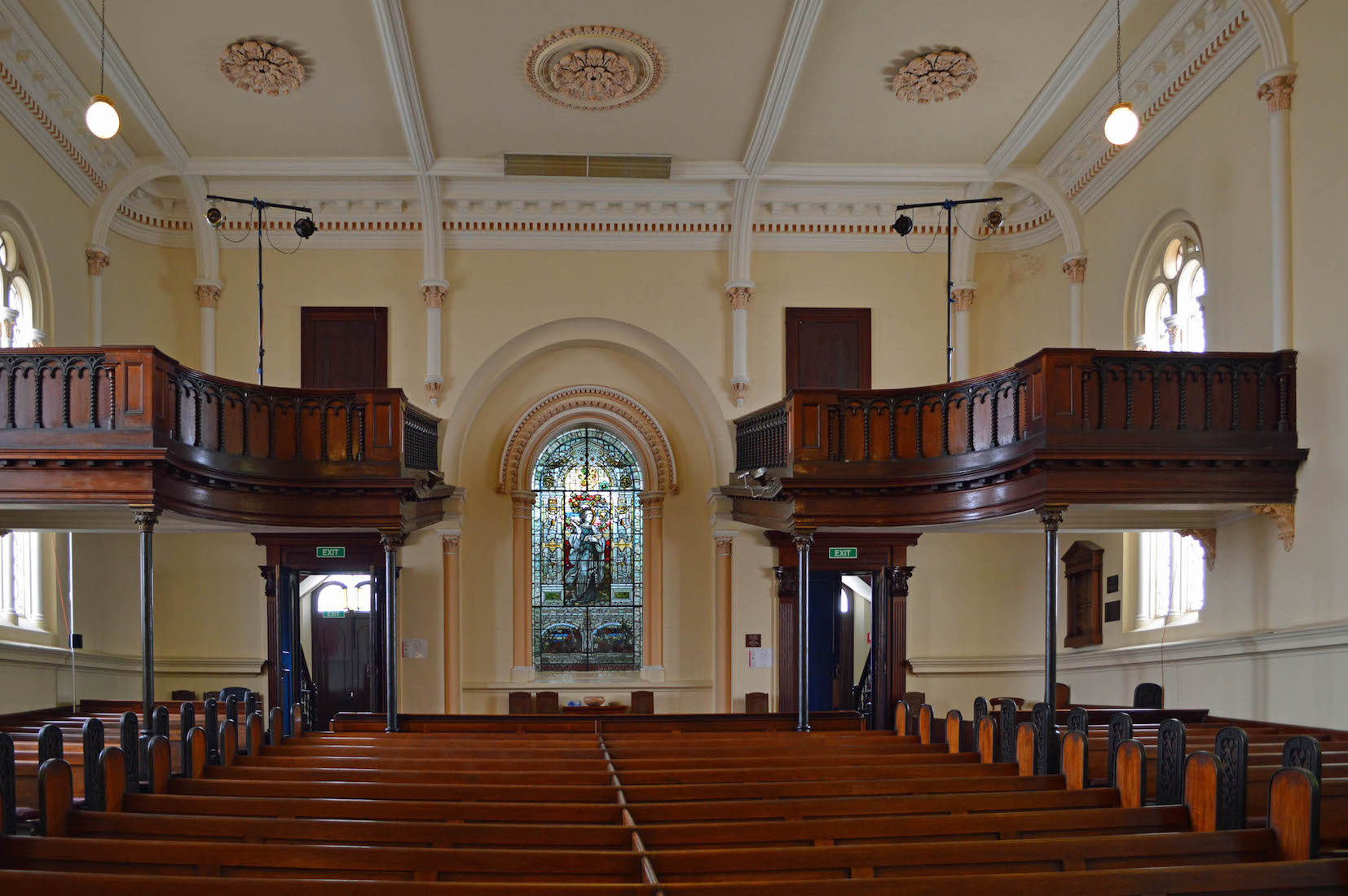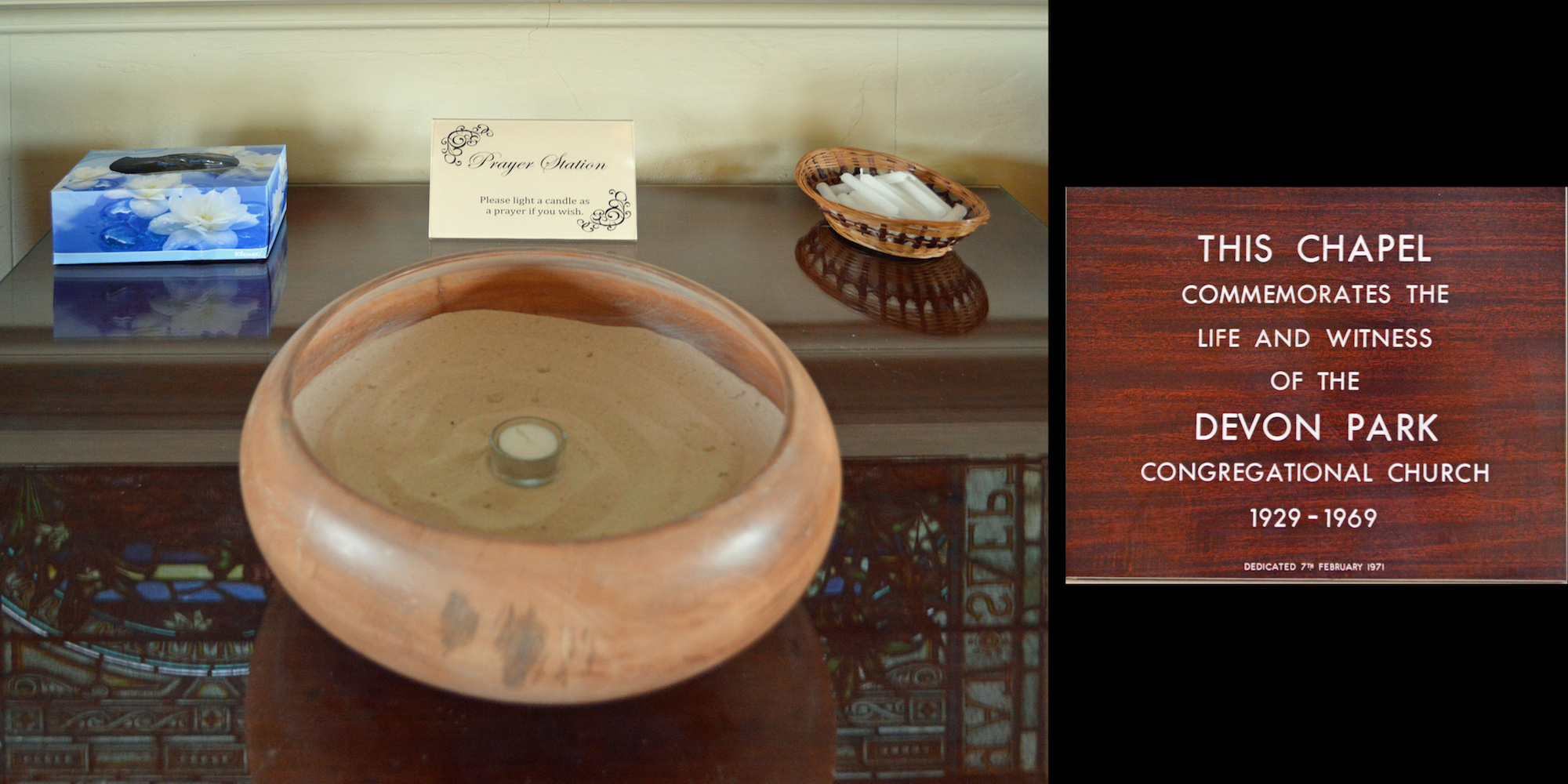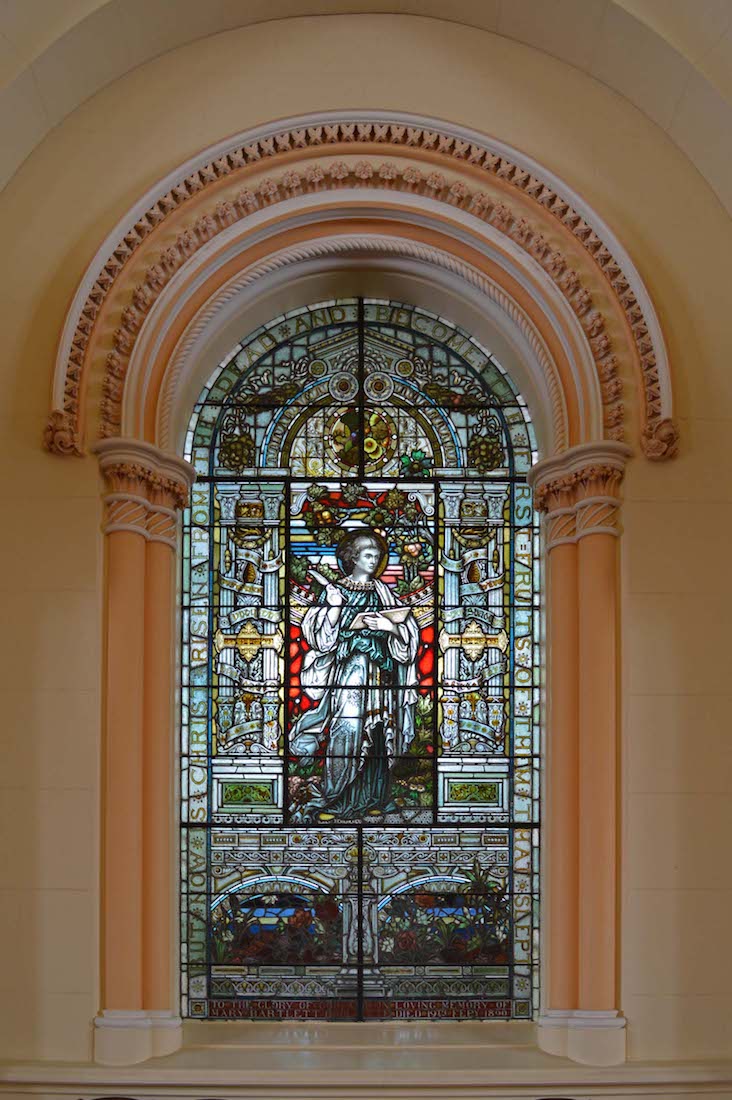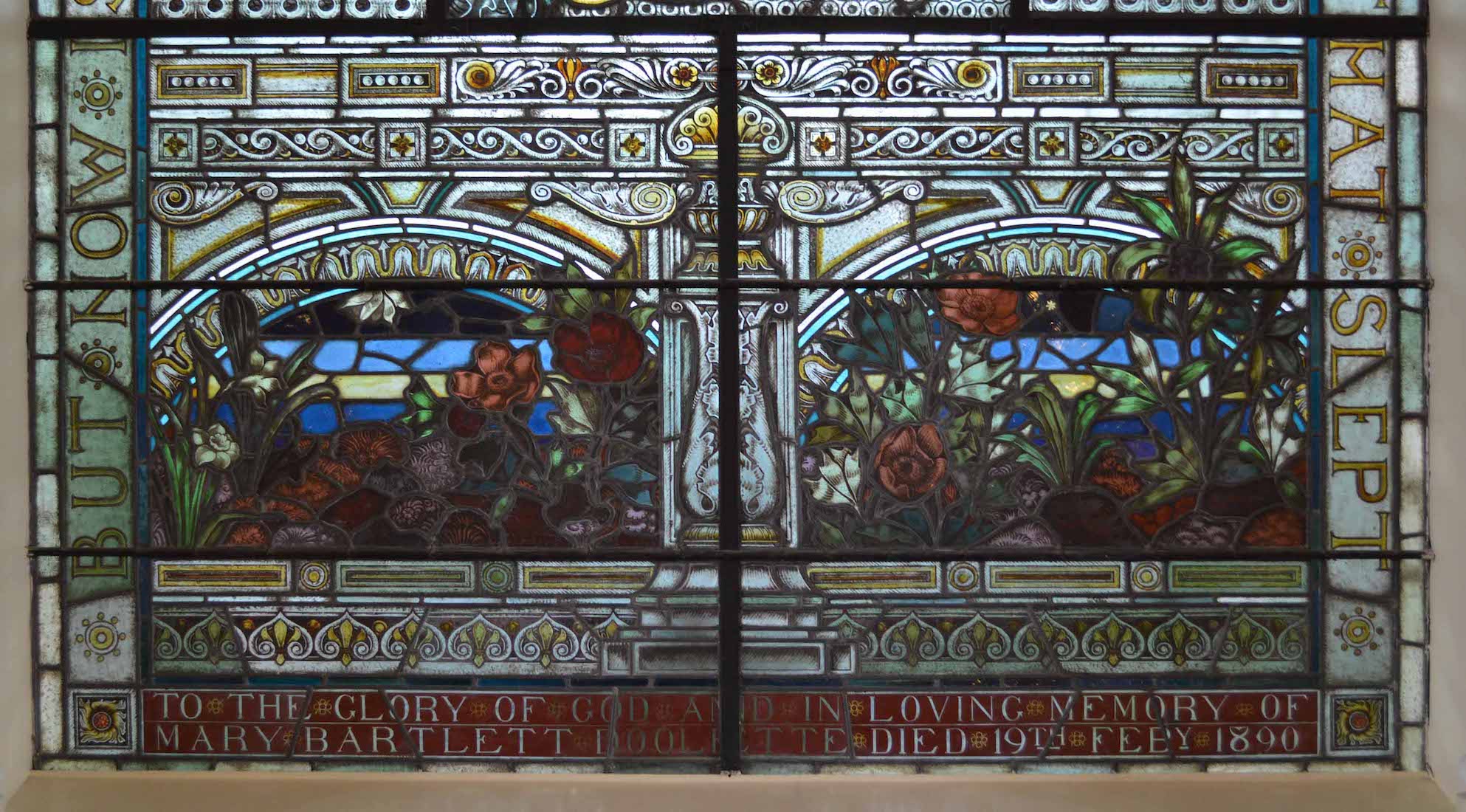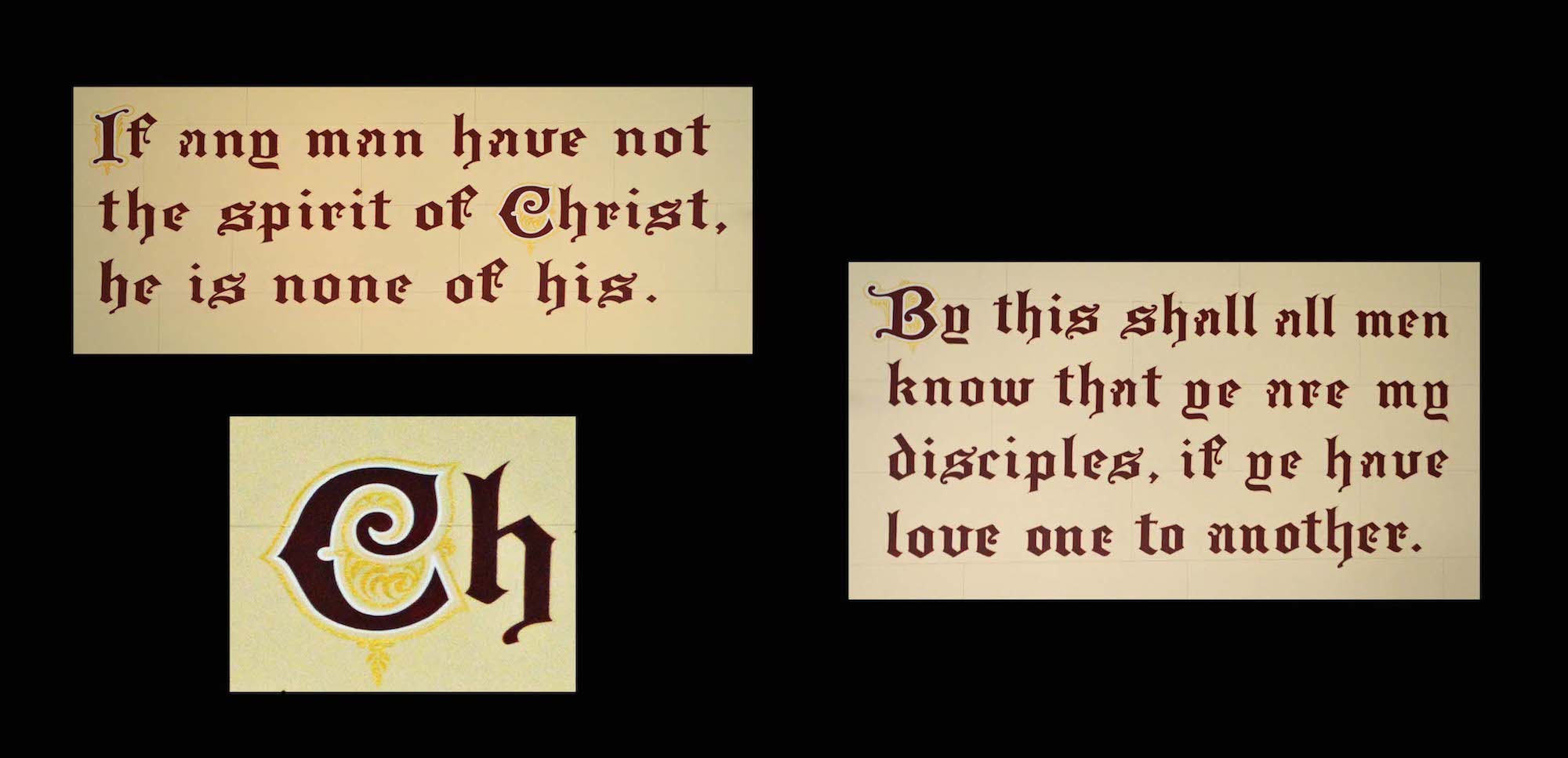
It used to be the fashion for churches to display scripture on the front wall – usually in difficult to read Gothic script! Here we have two well-known verses: ‘If any man have not the Spirit of Christ, he is none of his’ (Romans 8:9), and, ‘By this shall all men know that ye are my disciples, if ye have love one to another’ (John 13:35). Closer inspection reveals extra ornamentation around the capital letters. INDEX
22. LECTERN AND FONT
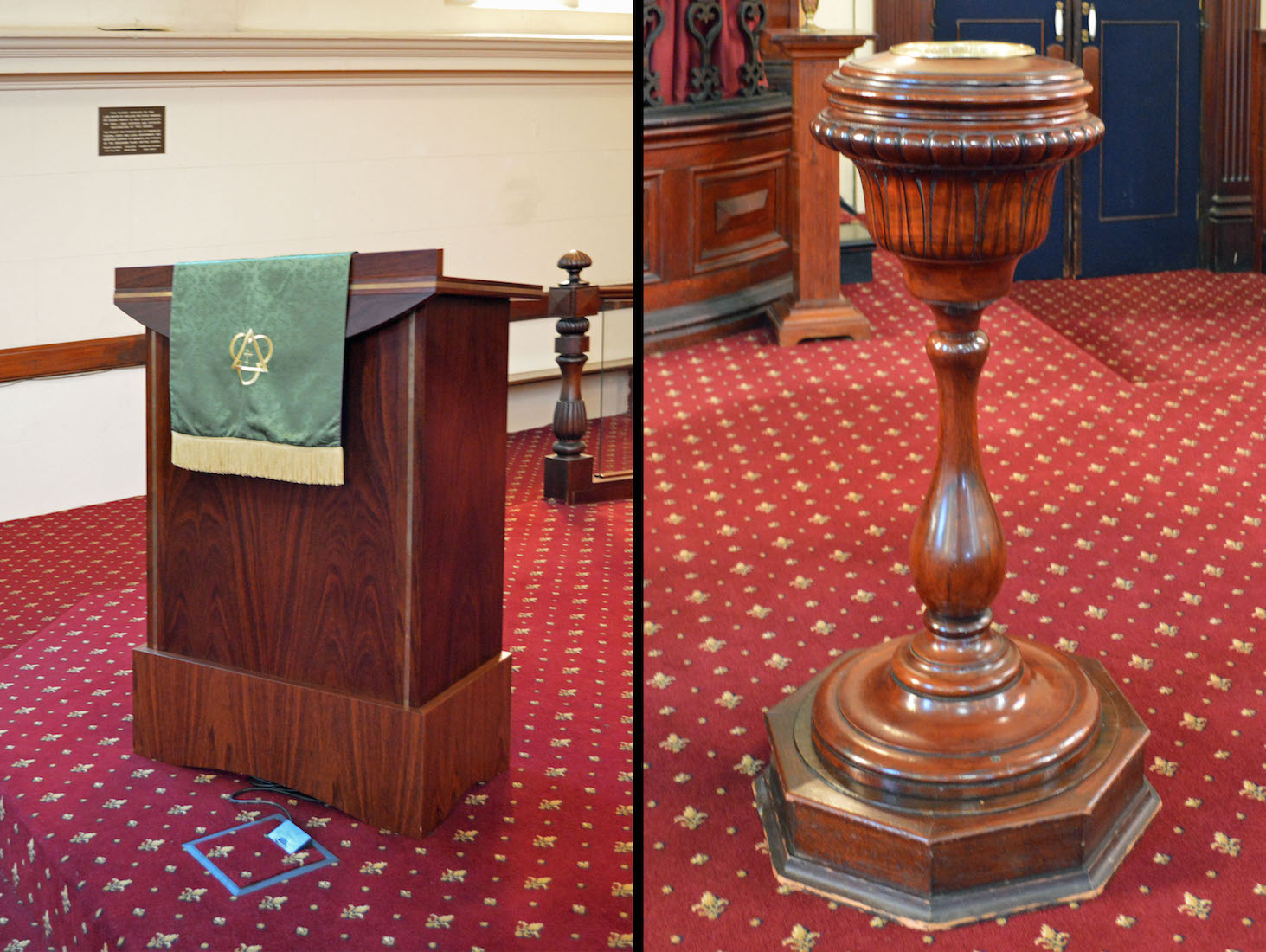
An important aspect of Protestant worship services is the reading of the Bible. This reflects the words from 2 Timothy 3:16: ‘All Scripture is given by inspiration of God, and is profitable for doctrine, for reproof, for correction, for instruction in righteousness.’ The font acknowledges that baptism is the church’s rite of initiation: it incorporates a person, infant or adult, into the church which is the body of Christ. It is a sign of God’s gracious act for all people, giving himself in Jesus Christ and bringing people to faith through the Holy Spirit. Baptism involves pouring water over the head of the person being baptised.
23. COMMUNION TABLE
The communion table is used by many Protestant churches, particularly from Reformed, Baptist, Congregational, and non-denominational traditions, for the preparation of the Eucharist (or ‘Lord’s supper’). The use of a simple table instead of an altar reflects these churches’ rejection of any suggestion of sacrifice in the Holy Communion: they believe that the Passion of Jesus Christ was ‘a perfect sacrifice for sins made once for all’ (Hebrews 9: 25–10:4).
24. PULPIT
Whereas the lectern is used for reading God’s Word, the pulpit is where God’s Word is expounded, and its principles applied to modern day Christian living. This pulpit carries the word ‘Emanuel’ (also ‘Emmanuel’, ‘Immanuel’). Of all the names given to Jesus there is no name more significant than this. This name, which Matthew refers to in his Gospel (Matthew 1:23), was first given to Jesus by the prophet Isaiah 700 years before his birth (Isaiah 7:14). And this very special Christmas name, as Matthew tells us, means ‘God with us’. Jesus Christ is Immanuel,’God with us’.
25. ORGAN
25. The organ was designed and built by William G. Rendall. Construction began in 1881 and it came into service in 1882. It was valued at approximately £800 and weighs almost 9 tons. J. E. Dodd rebuilt the organ in 1914 and an electric blower was added in 1922. Until that time, the ‘wind’ was supplied by a young man at the bellows in the little room off the flower vestry. The console where the organist sat was moved from its original position to the centre of the sanctuary around this time. It was repositioned to its original high position in 2007. The present organist is Rosemary Nairn, who has also conducted the choir since 2002.
26. ORGAN ORNAMENTATION
The photographs show some of the attractive decoration around the organ.
27. MINISTER’S VIEW
The minister has a commanding view from the pulpit. We notice the candles and cross on the communion table. The cross is the central focus of the church, as it reminds us of the sacrificial death of Christ, and our resulting salvation and acceptance by God through faith in Christ. Candles are used in many churches, symbolising Christ, the light of the world.
28. LOOKING UPWARDS
I enjoy checking out the ceilings of churches I visit, and there are some treats to enjoy in Brougham Place Uniting Church. The ceiling roses are perfect and have been carefully detailed in different colours. The same care has been applied to the border around the top of the walls.
29. NORTH WALL
We take a final look at the North wall before turning to the South wall … .
30. SOUTH WALL
The general layout of the South wall is the same as North wall, but of course the details differ. Notice that the window at the left has a small plaque beneath it. A major difference with this wall is that the Western-most window remains plain.
31. MOTHERS’ WINDOW
On the Southern side, the window nearest the altar is dedicated to mothers: ‘Since the day the Blessed Mother Christ the world’s Redeemer bore, he has crowned them with an honour women never knew before’. It was completed during the ministry of Rev L. C. Parkin. It was designed by Miss Gladys Good, a teacher at the School of Arts, who with her sister Roslyn, were members of the Church for some years. It was financed by contributions given in memory of individual mothers. This was unveiled in 1939 by Katherine Chrennell, grandmother of Mrs Jeanette Chapman, who remains a member of the Church.
32. McEWIN MEMORIAL WINDOW
This window is for Rev. John and Mrs Agnes McEwin. Ancestor George McEwin arrived in 1939 and settled at Glen Ewin near Houghton. His son, John, was ordained a minister in Hindmarsh in 1872; he is the man remembered in the window. He died in 1894 and his wife survived him by 42 years. It is presumed that through McEwin family connections, Brougham Place became linked with the group meeting at Houghton. John’s son, another George, was a great worker at Brougham Place, being a deacon for many years, and its beloved secretary and treasurer at one time. The window was unveiled on 9 May 1937.
33. THOMAS STOW MEMORIAL
Thomas Quentin Stow (1801–1862), was born in 1801 in Suffolk, England. In 1836 he was accepted for service in South Australia by the newly formed Colonial Missionary Society. Steve preached his first sermon in a marquee. Shortly afterwards, with 10 others he formed the first Congregational Church in South Australia and was elected pastor. Early in 1838, on North Terrace, he helped to build a temporary place of worship with posts, rafters and reed thatch. Stow was responsible for forming many new churches and for recruiting and training several ministers. He was the first chairman of the Congregational Union of South Australia in 1850.
34. CALVERT EXPEDITION WINDOW
This was an expedition to the north of Western Australia which left Adelaide in 1896, after a service held in the Brougham Place Church. The expedition was led by L. A. Wells, a South Australian public servant, with his cousin Charles F. Wells, as second-in-command. To enable them to cover more territory it was decided at one stage that the party separate. C F. Wells and another member, George L. Jones, went off on their own but unfortunately they perished, due to excessive heat, lack of feed for the camels, and lack of water. The window commemorates their loss, and was erected by relatives of the two lost men.
35. SOUTH BALCONY
A balcony stands in the Southwest corner of the church, and an identical balcony stands in the opposite corner.
36. PA SYSTEM
At the back of the pew seating, a PA system has been installed. It bears a plaque in memory of Bill Whitefield who was verger of the Church from 1986 to 2009. Bill Whitefield operated the PA system for many years to his death.
37. WEST WALL
As we draw near to the end of our tour of this Church, we take a general look back at the West wall. At centre is a delightful stained-glass window. Just below the window stands a small table bearing various items. There is also a small brown commemorative plaque to the right.
38. PRAYER STATION AND PLAQUE
On the table stands a small sand-filled receptacle for placing a lighted candle. Many churches, and particularly Catholic churches, have a place like this, where one says a prayer and lights a candle. I think of Psalm 141:2 : ‘Let my prayer be like incense offered before you". The brown plaque commemorates the life and witness of the Devon Park Congregational Church from 1929 to 1969.
39. DOOLETTE WINDOW
On the western wall is the beautiful Doolette window, at the entrance to the Church. The figure depicted is the gospel writer St John. The window was donated by George Doolette in memory of his wife, Mary, who died on 19 February 1890. They had been members of the Church since 1873, when they lived in Buxton Street. Mr Doolette, who was later chairman of the Congregational Union of South Australia, was born in Dublin in 1839 and died in Surrey in 1924.
40. DETAIL OF THE DOOLETTE WINDOW
The Doolette window is very pleasing in its detail. The script at the base of the window reads: ‘To the glory of God and in loving memory of Mary Bartlett Doolette. Died 19th of Feby 1890.’



